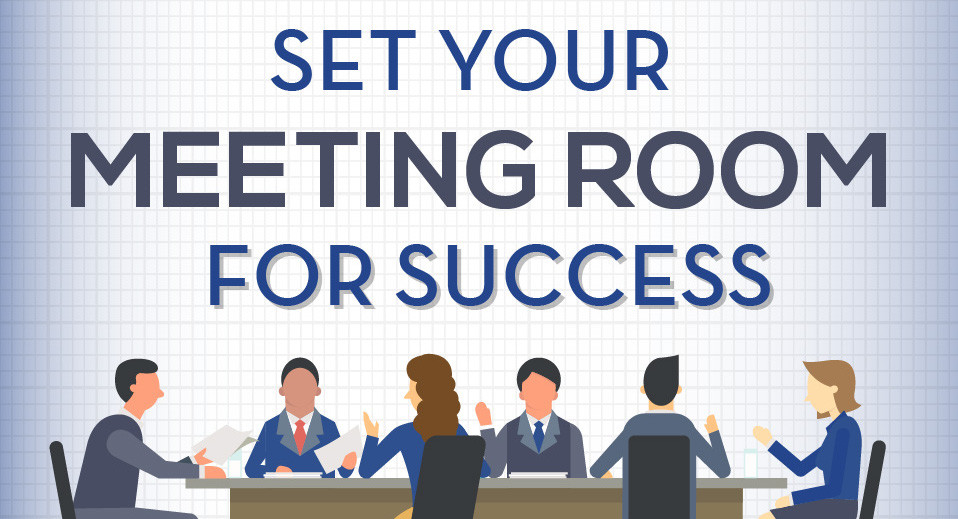
How to Set Your Meeting Room For Success
When you are holding a meeting, does the overall atmosphere of the room cross your mind? Do you think about whether or not the meeting room helps to invite participation among your team members? Do you realize that it could even stifle creativity? Many leaders waltz into the conference room to quickly run through their meeting agenda without considering one important, but often forgotten, element to team success - how to effectively set up a meeting room!
Next time you set up a meeting, consider the following:
To sit or not to sit. If you are hosting a very brief meeting (less than ten minutes), keep team members standing. If you and your team members sit down, arrange the chairs in a u-shape or semi-circle. Flipcharts can be placed at the opening so all members can focus on the task at hand.
Table it. Contemplate having a meeting with no tables or barriers to communication – just people talking to people. Interesting, right?
Just right. Make sure there is just enough space so team members aren’t crowded and not too large that the empty space sucks all the energy out of the room.
Seats, everyone. For meetings that are scheduled to last over an hour, take a look at the chairs. Wheels on chairs are nice, armrests are good, extra padding is great. Otherwise, schedule breaks often!
Something to drink? When you place waters on the table it shows team members you have put thought into the meeting. Coffee and juice in the morning and sodas in the afternoon as well as snacks are a real treat. Pastries and donuts are a classic meeting food but include healthy alternatives such as fruit or granola bars. In the afternoon, try cookies, cheese, and crackers, or a vegetable tray.
Location, location, location. Schedule the meeting to be in a central location, so that no participant is inconvenienced. The room should be close to the restrooms. The entrance/exit doors should be at the back of the room so that participants are not interrupted.
Paraphenalia. Supplies like pens, pencils, markers, notepads, post-it® notes are useful during most meetings. When appropriate, use your company’s imprinted items – they boost morale and remind everyone of the organization’s common goal.
Lighting and Temperature. Know how to adjust the lights and temperature to make your participants comfortable. If you know that the location is usually as cold as an igloo, advise participants to bring a sweater.
Technology. Tablets, projector screens, meeting apps and more! Will someone need technology on site? Who will bring it, does it work, and what is the WiFi password? Whatever your plan, do a dry run. Murphy’s Law prevails: What can go wrong, will go wrong!
Visit the room prior to the event. Make sure it is the best possible environment for collaboration. Run through the agenda and ask yourself, “Is there anything I can do which will enhance the team members’ contributions?”
When you take initiative as a leader to pay attention to these small, but crucial details, you can make the difference between a dull, unproductive meeting and one that is upbeat, enthusiastic, and really gets results.
KRISTIN ARNOLD, MBA, CPF, CSP is a high stakes meeting facilitator and professional panel moderator. She’s been facilitating teams of executives and managers in making better decisions and achieving greater results for over 20 years. She is the author of the award-winning book, Boring to Bravo: Proven Presentation Techniques to Engage, Involve and Inspire Audiences to Action.
Recent Articles:
Stretch your Leadership Team’s Ability to Think Strategically
3 Hiring Strategies Successful Organizations Use
Leaders: Do You Need Strategic Planning or Do You Have Clear Vision?
